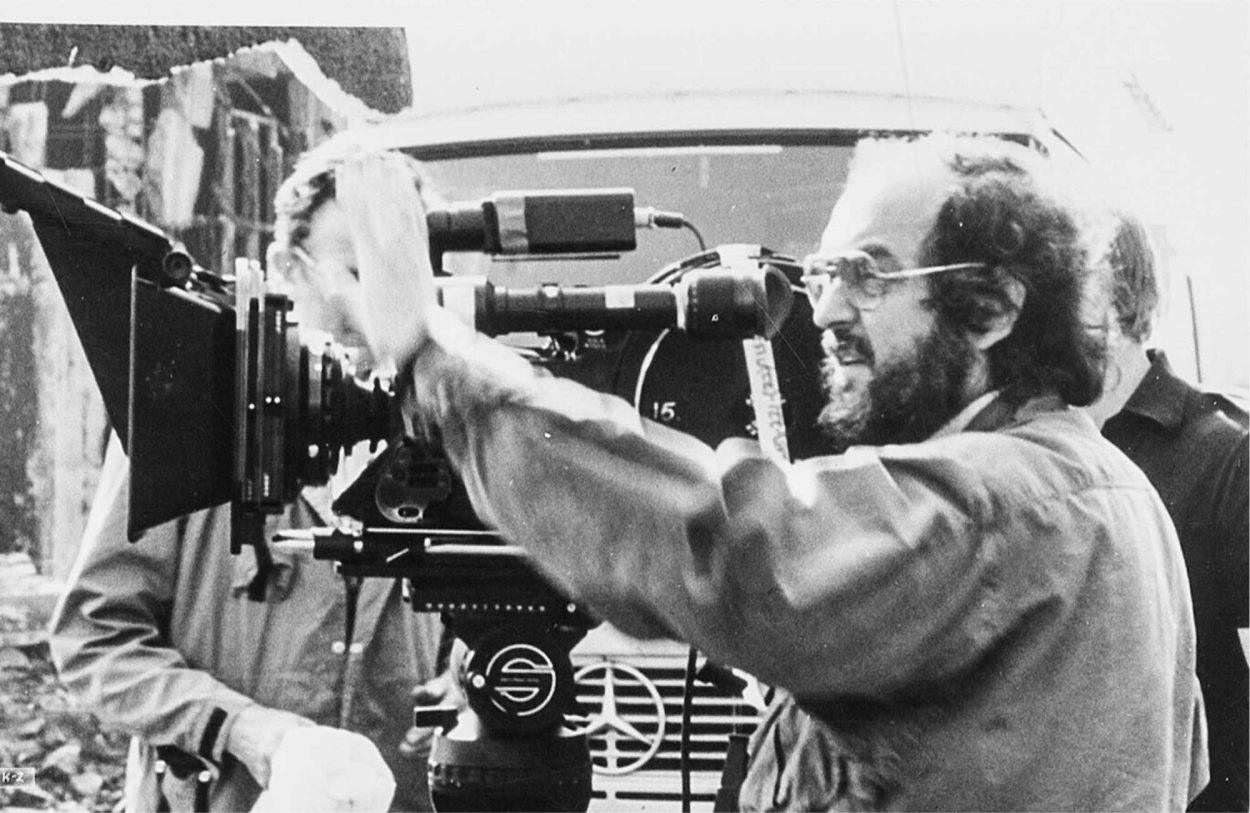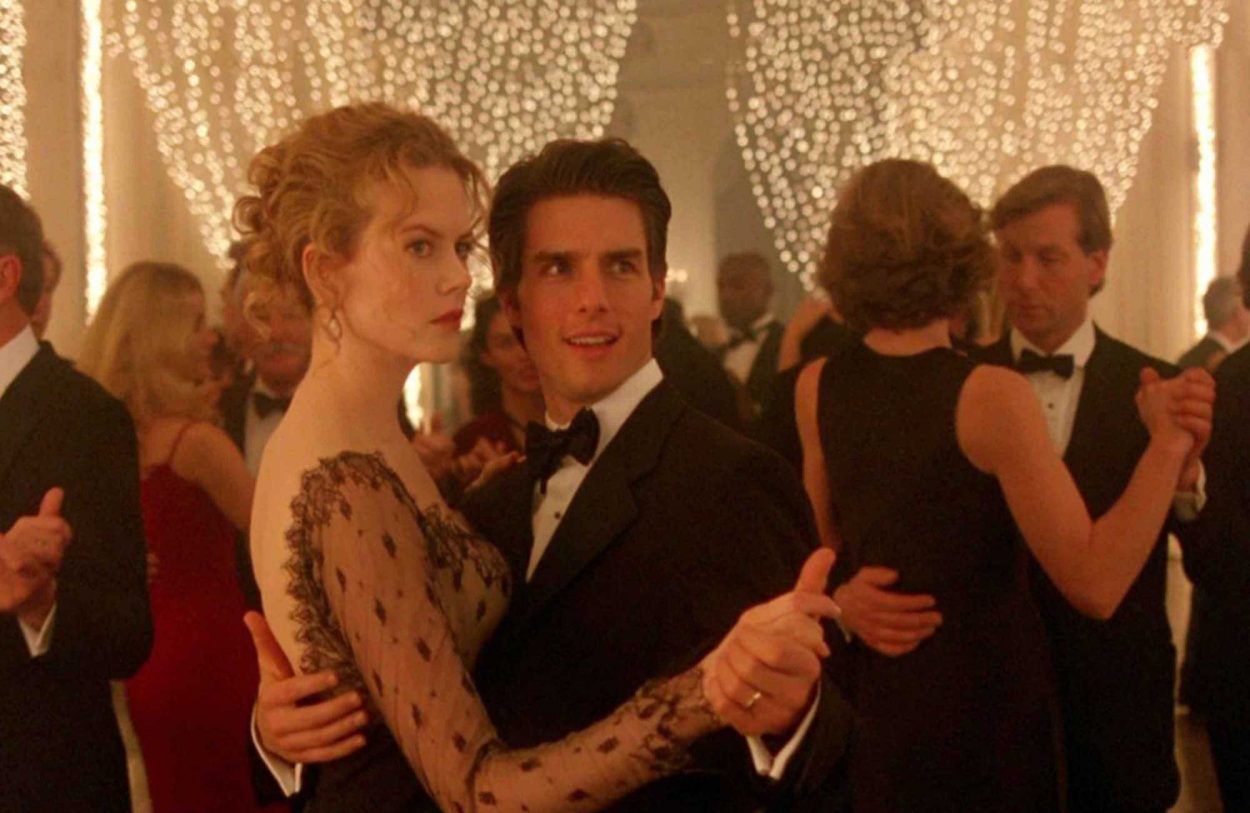“Back in the 40s this town was crawling with dollies like you. Good looking cokeheads trying their damndest to act tough as hell. I got news for you: they did it better back then. This town doesn’t change. The just push the names around.”
“Jeez, Charles, he doesn’t look so hot to me.” So says Lily Tomlin’s new agey Margo when she first spies Art Carney’s retired private investigator, Ira Wells. She’s scoping him out at a place many young people think guys his age are about to set one foot in – a cemetery. A seemingly anonymous old looking guy in a rumpled suit paying his respects to a dead person and the dead person’s loved ones, Ira walks past crypts on one of those sunny, deceptively cheery Los Angeles days that would feel strangely depressing even if he wasn’t in a cemetery. It feels a little impersonal too, all out in the open with those rows of crypts, and especially as Margo is sizing him up for hire. The camera follows Ira and you can hear a plane passing overhead. It’s an interesting way to introduce Tomlin’s character as she’s introduced to Ira – just her voice and her first impression observation – and then her sleazy-slick pal Charlie (Bill Macy) reassuring her: “Let me tell you kiddo, Ira Wells used to be one of the greats.”
Used to be. We’re still not so sure even after we’ve been introduced to Ira in the opening scene of Robert Benton’s 1977 picture, The Late Show. When we first see Ira, he’s sitting in his little room – not in an apartment we don’t think at first – but what looks like a room in a boarding house. An old movie plays on his TV. This is a lived-in space and it’s nice that the movie takes the time to show us his surroundings: there’s books stacked around and taped up photos of the old days, socks hanging to dry, a messy bed. We’ve noticed from the start that he’s working on a memoir, the title reads: “Naked Girls and Machine Guns: Memoirs of a Real Private Detective.” Well, that’s quite something. Who is this guy? If we had no idea what this movie was about before watching, we’d wonder how much of that title is an exaggeration. Or, is he writing a detective novel? But, right away, we think, this man – this man in this humble, rather touching room – thinks of his life as something to remember (as he certainly should. As anyone should.) And he also thinks that his life is something others should remember, hence, a memoir, or writing based on himself. And he’d like to grab people right away with the pulpy title: “Naked Girls and Machine Guns” (kind of ridiculous and “immature,” as Margo might say, but, hey, it grabbed me too). Obviously, Ira sees glamour in his old, sexy dangerous days, and maybe at this point of the movie, he’s content to drown himself in times past. The present? Watch another old movie and go to the race track.
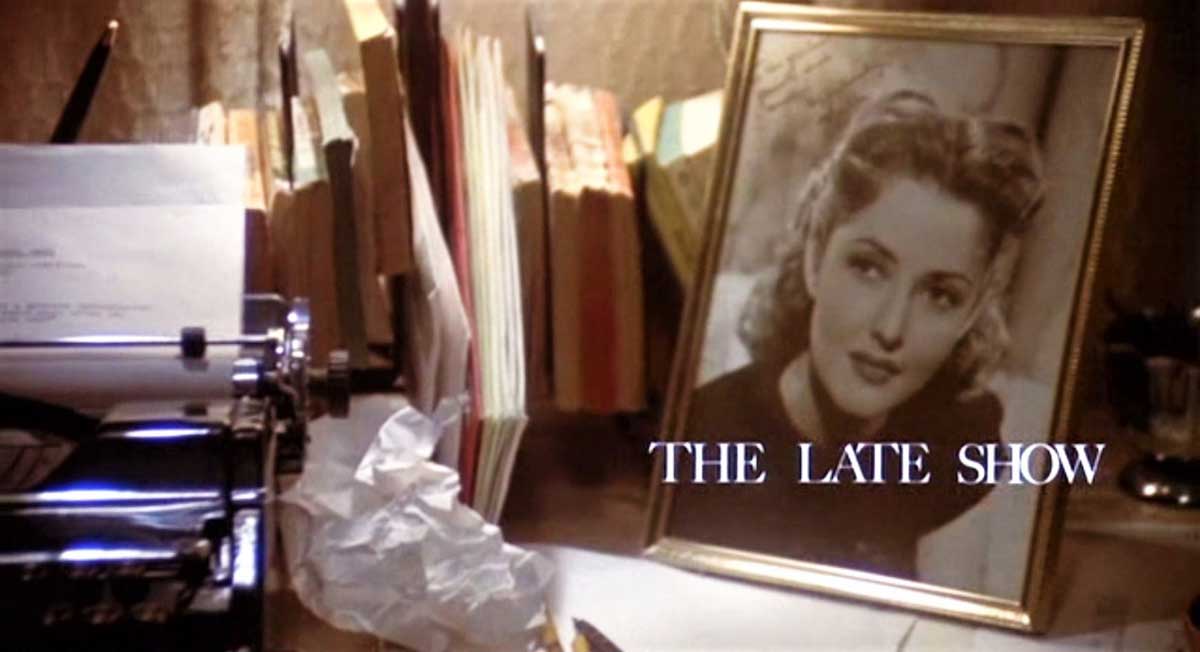
As he sits in this somewhat sad, sagging room, we see some glamour in a framed photo of a beautiful young woman. An ex-wife? An old sweetheart? Probably not, as the woman is actress Martha Vickers, so memorable in Howard Hawks’ The Big Sleep. A noir-soaked nod on part of the filmmakers, a fan photo for Ira and, at first glance, a possible old flame of Ira’s. An old flame is not likely but … you never know. Ira may have had an even more exciting past than we will ever know. This is a room of memories. Not cool or flashy or dingy in a hardboiled, black & white, neon-sign-flashing-in-the-window kind of way, but the room of an old man. The room of someone’s grandfather. But. We suspect that this guy doesn’t have any grandkids. Or any kids for that matter. Or, any grandkids or kids that he’s ever kept in contact with, anyway.
His peaceful night of old movies and writing is interrupted when his old partner, Harry (Howard Duff – Duff played Dashiell Hammett’s private eye Sam Spade on the radio, and appeared in Brute Force, The Naked City, Private Hell 36 and While the City Sleeps – he was also married to Ida Lupino for a time) pays him a bloody visit. And then promptly dies in his room. He’s been shot. Ira is both pissed off and heartbroken. Now we see the tough guy Ira once was and still is: “God damn you, Harry! Letting someone walk up and drill you like that. Point blank. Nobody can palm a .45. Jesus Christ. You never had the brains god gave a common dog!” And then we see how heartfelt Ira is too: “Sorry you’re going off, pal. You were real good company.”
Ira starts tearing up.
Harry is the dead man Ira is seeing off at the cemetery, so it makes sense he’s so grumpy from the intrusion of Margo and Charlie. Let the man mourn his friend and partner for chrissakes. And worse, the case seems two-bit to him. You see, Margo wants to hire Ira to find … her cat. (We can’t help but think of Carney’s recent starring role in Paul Mazursky’s Harry and Tonto, though Ira does not give a toss about Margo’s cat). Margo owes a guy 500 bucks and, to settle the score, the guy has stolen her cat – he’s threatening to kill the animal if she doesn’t pay him. “So pay him!” Ira barks at her. Angry at Charlie he walks away muttering about how younger people should respect their elders. He’s sick of this shit, and he’s got other things to do. Like get on the bus. Go to the races. Sleep. Something. But soon enough, Ira knows there’s more going on here if Charlie is involved. In a terrific exchange, while Ira and Charlie are seated for a shoe shine (Charlie, wearing his flashy brown leather jacket, polyester shirt, orange pants and yellow socks, is reading The Hollywood Reporter – there’s ragged reminders of supposedly glitzy Hollywood all over this picture), Ira asks him what the hell is going on here with this “dolly” and the cat. Ira breaks it down: “Somebody puts the freeze on Harry Regan. Next thing I know you show up at Harry’s funeral with some dolly and a song and a dance about a stolen cat and all that hot comedy. What’s it all got to do with Harry?”
Well, something has got to do with Harry in this mess with the cat and “all that hot comedy,” and so Ira is on the case, discussing details with Margo in an amusing scene in her apartment, a space very different than Ira’s living quarters. Cat pictures, lots of plants, tapestries, bright colors, rock posters, there’s a meditation recording playing (she wisely turns it off), Ira shifts uncomfortably in his chair, while listening to her brief life story (wanted to be an actress, gave it up because she couldn’t play the Hollywood game, is now designing clothes, used to deliver items for some guy – probably hot – and split the money with the cat kidnapper. Only, one time she didn’t – here’s where Harry gets involved…). A woman of the 1970s, one who openly talks about her period and her therapist and astrological signs, Margo is a woman who’s seemingly trying anything in Hollywood, not just out of desperation, but out of, what she says, to “go with the flow.” I thought of the scene in Robert Altman’s The Long Goodbye (Altman produced The Late Show) when Elliott Gould’s Marlowe tells bumbling Harry (David Arkin) what his scantily clad neighbors do for a living – they dip candles and sell them in a shop on Hollywood Blvd. Harry exclaims: “I remember when people just had jobs.”
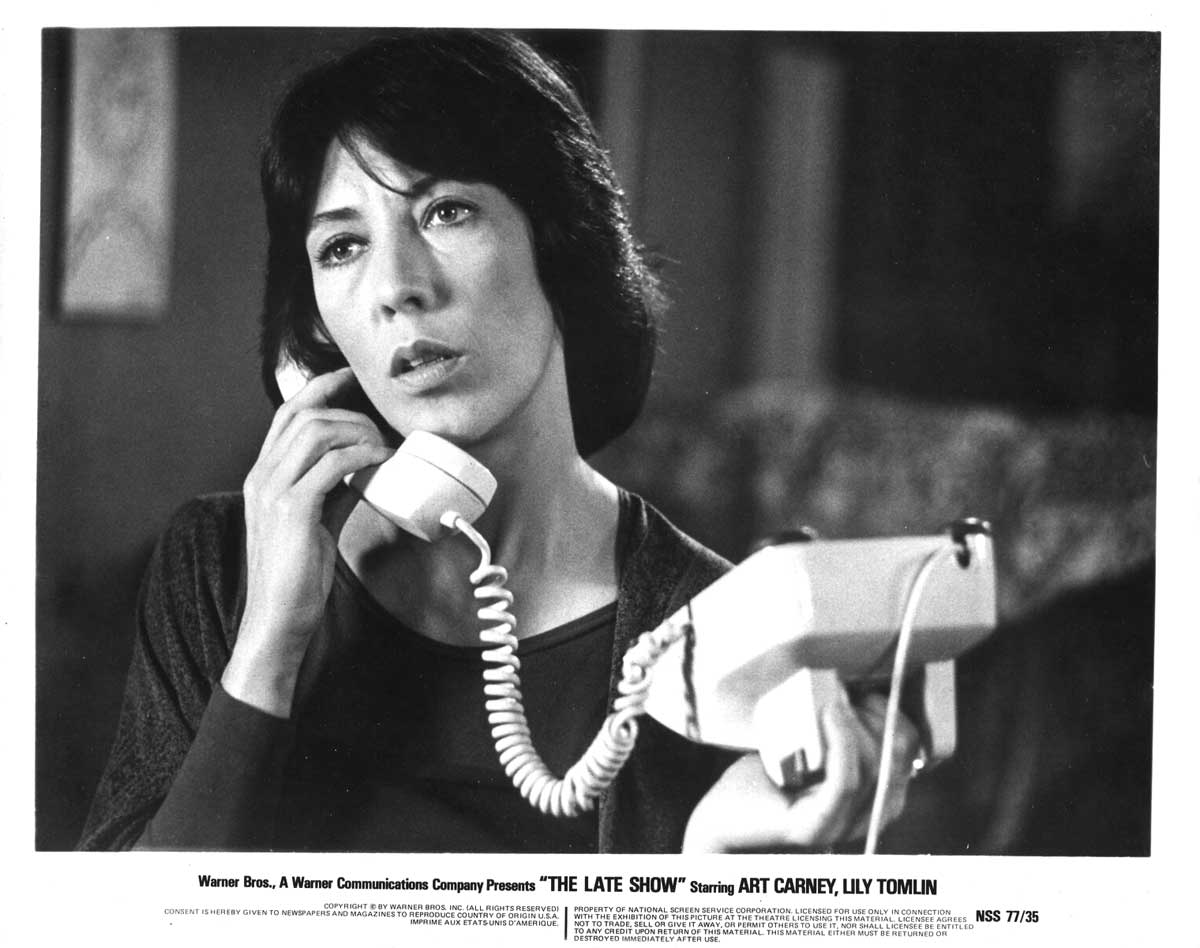
Tomlin makes Margo lovable and smart – not just kooky and stereotypical hippy dippy – and a little mysterious too. For how much younger she is, and all of her more youthful of-the-time speak, does she have any friends, really? Other than the singer she manages? And are they even friends? Surely, she has a whole other life, but as presented here, it seems Charlie is her only friend. You start to understand that Margo, like Ira, is actually lonely. And that Los Angeles can be an alienating town whether you were a once aspiring actress, or you’re a retired private eye. You feel like people don’t care about you anymore. You’re don’t have that “it” factor. You feel disposable. It’s this observation of the fringes of Los Angeles, the “real” people (who may have had extraordinary lives if you bother to ask them about it), that makes The Late Show so intriguing and moving. It’s showing the sleazier side of the city; one in which people are still hanging on – some, by their fingernails. But they’re not all down-and-out, not yet, though one day they might be.
As the complicated mystery unfolds, Ira and Margo grow closer, and his crankiness softens. He seems amused by her, even likes her. And, in one scene at a bar, she tells him that she confessed to her shrink that she thinks he’s cute. He’s not sure what to make of that but the old guy must be flattered. She is thrilled after a high-speed chase in her van and she delights at the idea of them partnering up – a P.I. team. You feel for Margo as she suggests Ira move in to the apartment next door because, well, not only is she thinking of her new venture past designing clothes and managing talent, but she’d like to have this guy closer to her. She likes his company. He tells her he’s a loner. But the movie never turns this into a typical May-December romance – their attraction works as friends, as potential partners, as two different generations who have found something within each other that works, even if they drive each other crazy. And the movie never makes fun of them either. Margo may be a little zany, even annoying at times, but she’s got a heart, she’s got substance. And Ira may be cantankerous, walking around with his bum leg and aching gut, but he’s not always cranky, he’s witty, he finds joy in some things. And he’s got a good soul. Also – he’s still a good shot. In a remarkable scene, Ira aims fire at a car, but before he shoots, he pulls out his hearing aid. Somehow this is not funny, it’s just badass.
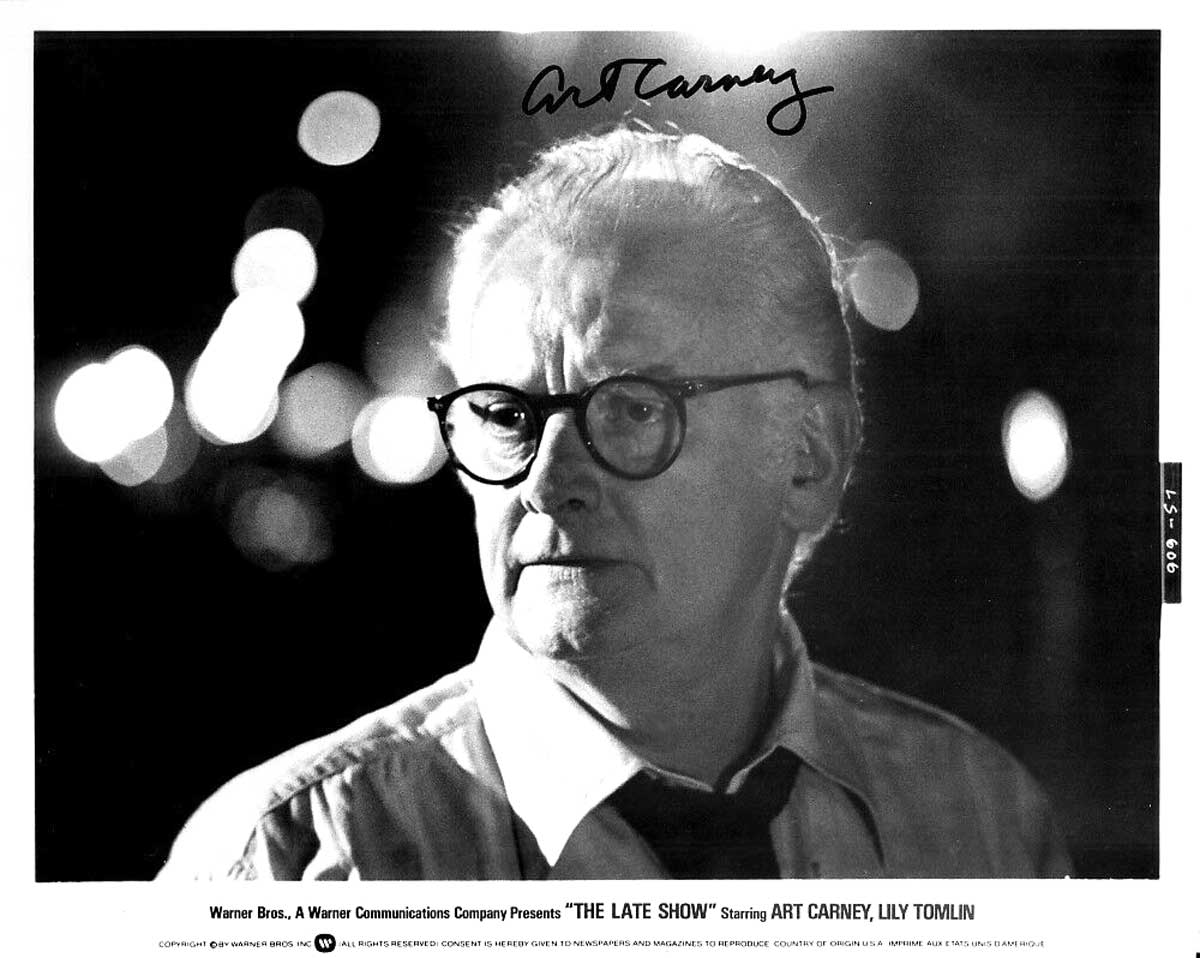
Benton (who earlier had co-written Bonnie and Clyde) wrote and directed this picture, his second directorial effort after Bad Company, and before his next picture, the Oscar-laden Kramer vs. Kramer. The Late Show, mostly acclaimed upon release, but underseen, is one of his best, if not his very best (I also like his later work with Paul Newman, Nobody’s Fool and Twilight). This is a gentle character study about the seamier side of Los Angeles that’s also violent, funny and melancholic – not super striking cinematically-speaking, certainly not showy, but deeply felt and nuanced. And the actors are all splendid here including Eugene Roche as fence Ronnie Birdwell, John Considine as the creepy/stupid gold chain-wearing henchman, Lamar, Ruth Nelson as Ira’s sweet landlady Mrs. Schmidt, and a terrific Macy who is both fantastically oily and entirely human.
Carney, famous for his comedic (though touching) role as Ed Norton on the television show The Honeymooners was enjoying a resurgence in the 70s on the big screen (he hadn’t been in many motion pictures before), winning an Oscar for Harry and Tonto and co-starring in Martin Brest’s Going in Style (among other pictures). His performance here is beautiful. He’s rough and gruff and no-nonsense, spitting out hard-boiled dialogue naturally (he’s never forced, he never plays cute, he never fills his character with easy bathos), but he’s also poignant and real. There’s an inner life going on with this guy, one of regrets, surely, one of sorrows, but also one of past excitement. He doesn’t just play this simply as an aging tough guy gumshoe, as Mr. Cool, and that makes his performance even cooler. There’s a wonderful moment where Ira is trudging down the street, dragging his laundry along in a sack (he doesn’t have a car) and Charlie and Margo drive by, asking him where he’s headed. He’s snaps back, “I’m on my way to the Brown Derby to meet Louis B. Mayer! Where does it look like I’m headed?” The humbleness of the laundry, and the idea that he both does and does not give a f*** about what it looks like, his quick-witted delivery – it’s both charming and moving.
And the ending of the picture is charming and moving, circling back to the beginning of Ira and Margo and where they met – at a cemetery. Another friend is buried, and the two walk along to the bus stop. They sit on a bench that’s advertising the Hollywood Wax Museum: “Mingle with the Stars,” it proclaims. There’s nothing much star-studded going on as they sit on the bench, on a typical smog-choked Los Angeles street, wondering what to do next. But it appears hopeful. Maybe they’ll even partner up. After all, he’s still great at his job – age is experience, in spite of Hollywood’s endless quest for new stars, for youth – and he’s got a connection with Margo. And they’re in Los Angeles, a town, that Ira thinks, even as he grows older, never really changes: “The just push the names around.”

